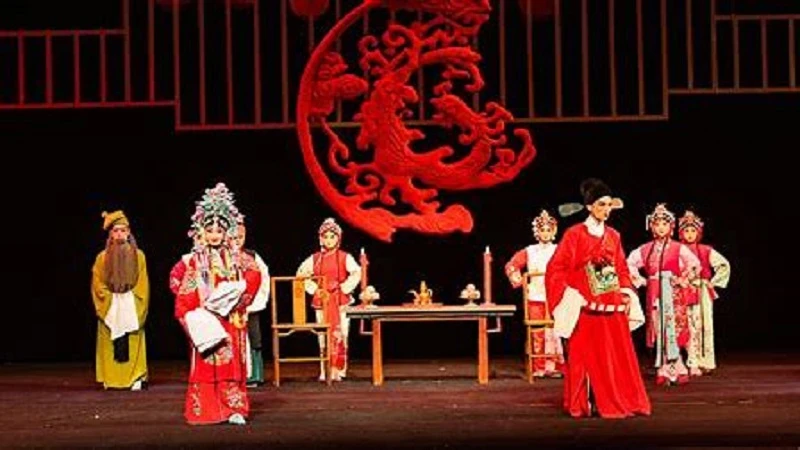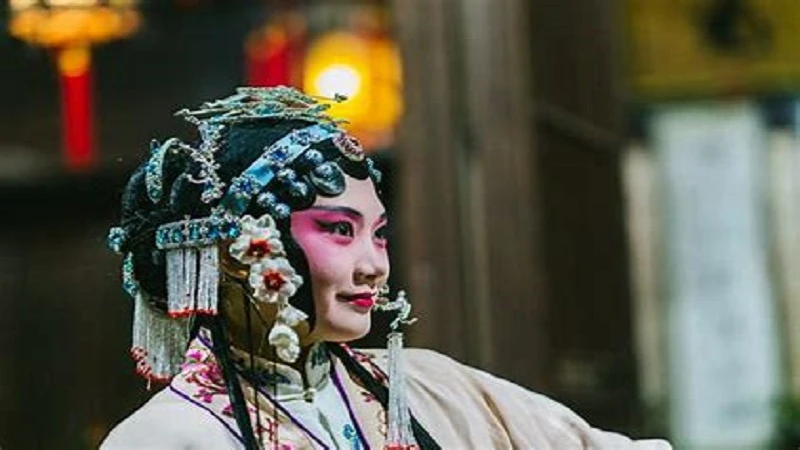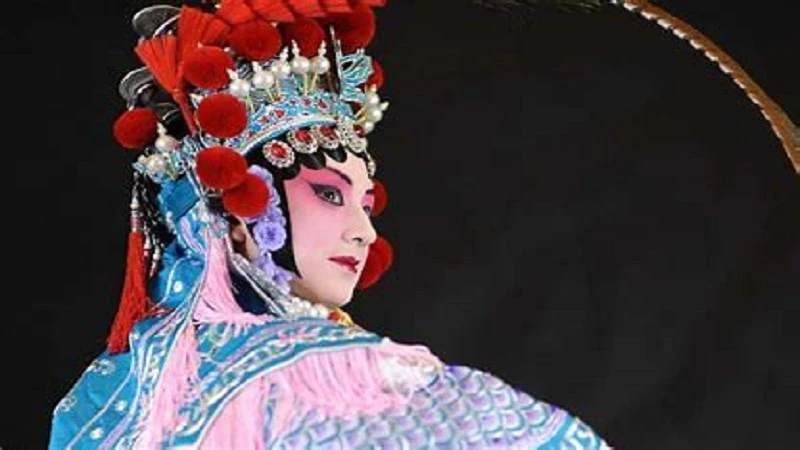In recent years, a unique fusion of traditional Chinese opera and modern music, known as "opera songs" (戏歌), has captivated audiences across China. Songs like "Wan Jiang (万江)," "Tan Chuang (探窗)," "Chi Ling (赤伶)," and "You Shan Lian (游山恋)" have gained immense popularity online, blending the deep, resonant tones of traditional opera with contemporary pop elements. This innovative art form has intrigued music lovers, drawing them closer to the rich heritage of Chinese opera while offering a fresh, accessible twist on the classical style.
Opera songs are essentially modern compositions that incorporate traditional opera elements, using classic vocal techniques and musical structures to create something familiar yet new. By blending traditional opera with modern songwriting techniques, opera songs transform these age-old forms into more accessible and fashionable music. The appeal lies in their ability to balance complexity with simplicity, making them more relatable to today's audiences while preserving the unique charm of opera.

The Opera Songs and Chinese Music History
The development of opera songs has deep roots in Chinese music history. As early as the 20th century, iconic Peking opera master Tan Xinpei’s recording of "Selling Horses" was widely popular and considered an early form of opera song. This era laid the groundwork for what would later become a full-fledged genre, as traditional opera forms began evolving and adapting to modern sensibilities.
The rise of opera songs can be traced through two main phases. In the first, opera excerpts naturally emerged as individual performance pieces with strong popular appeal. These opera segments, such as the well-known "A Husband and Wife Return Home Together from Huangmei Opera’s The Heavenly Match, were beloved by audiences and achieved widespread recognition. These pieces gained a life of their own outside the context of the full opera, evolving into standalone songs.
The second phase saw intentional composition efforts by musicians who integrated traditional opera into modern songs. A milestone in this transition was Sun Xuanling’s creation of the early opera song Bu Suan Zi: Ode to Plum Blossoms in the 1960s, which used the Peking opera style while adopting a more melodic, song-like structure. By the 1980s, opera songs had fully matured, with pieces like "Qianmen Feelings Big Bowl of Tea" and "Hometown is Beijing" showcasing a seamless blend of opera's characteristic vocals with modern, popular music.
The New Wave of Opera Songs
As the genre evolved into the 21st century, opera songs began taking on new forms, integrating not only traditional elements but also modern stylistic choices that resonated with younger audiences. For instance, the song "Pear Blossom Ode," a theme from The Grand Concubine of the Tang, became a breakout hit by merging classic Peking opera techniques with a contemporary musical arrangement. The song’s melodic lines, coupled with the distinct vocal style of Mei Baojiu, made it both accessible and rooted in tradition.
What sets opera songs apart from other genres is the way they take the extended, intricate melodies of traditional opera and compress them into more digestible, modern forms. Instead of the slow, drawn-out notes often found in opera, opera songs "speed up" the pace, using popular music structures to enhance their appeal. This transformation of opera from slow and complex to lively and energetic enables it to engage with modern tastes, while still carrying the emotional depth and beauty of its origins.
There are three main ways in which opera songs typically blend old and new. First, they fuse traditional opera music elements with contemporary pop styles, using diverse rhythms and melodies from opera to create distinct and recognizable pieces. A standout example is the female group "Shangxi 416," composed of students from Shanghai Theatre Academy. Their fusion of opera vocals and modern tunes captivated young audiences, demonstrating how fresh and dynamic the genre can be.
Second, opera songs merge storytelling with music in a way that reflects modern life while preserving opera's rich narrative tradition. A prime example is "New Dingjun Mountain (新定军山)," which reinterprets a classic Peking opera in a modern setting, showing how timeless stories can be told with contemporary flair. The song retains the power and vigor of the original, but with a more accessible tone and rhythm.
Lastly, the art of singing itself in opera songs draws from the highly technical vocal techniques of traditional opera. Songs like "Chi Ling" incorporate complex vocal modulations typical of Kunqu opera but modernized to suit today’s musical landscape. This artistic choice allows listeners to experience the intricacies of opera while engaging with something that feels refreshingly new.
Balancing Tradition and Modernity in the World of Opera Songs
Opera songs have become a bridge between China’s rich operatic tradition and the tastes of contemporary music lovers. Through innovative fusion, this genre captures the timeless beauty of Chinese opera while adapting to the fast-paced, varied world of modern music. Yet, as the genre continues to grow, challenges remain. There is a delicate balance between honoring the authenticity of traditional opera and adapting it for modern audiences. Some purists argue that in the process of popularization, the core elements of opera may be diluted or lost.
However, if executed thoughtfully, opera songs have the potential to ignite a passion for traditional Chinese culture among younger generations. By offering an entry point into the world of opera, this genre allows audiences to appreciate the beauty and intricacy of an art form that might otherwise seem distant or inaccessible. As long as the cultural "DNA" of opera is preserved, this modern adaptation can serve as a powerful tool for cultural transmission, ensuring that Chinese opera remains a living, evolving tradition for future generations.


